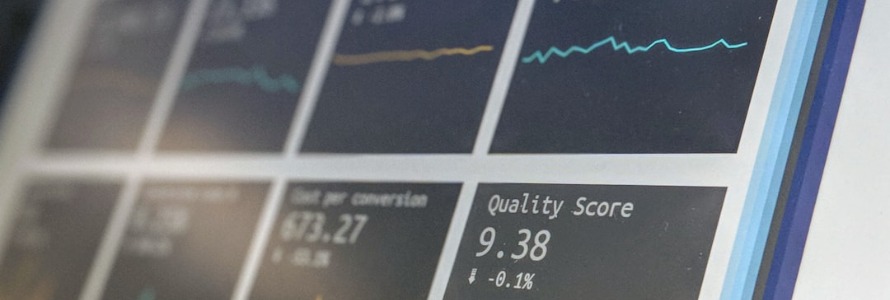
In today’s competitive business environment, pricing is more than just setting a figure for your product or service. It’s a complex, strategic decision that significantly influences sales, brand perception, and profitability. As a business owner or manager, understanding how to analyze your pricing data and track sales effectively is essential to optimize your pricing strategy. By leveraging data, businesses can not only improve their pricing accuracy but also adjust their strategies in real-time to stay ahead of market trends, customer preferences, and competitors.
In this article, I’ll explore how data can be used to analyze pricing, track sales, and make informed adjustments to boost your business success.
Understanding the Importance of Pricing Strategy
Pricing plays a vital role in determining your product’s success in the market. Setting the right price is a balancing act: it needs to be competitive enough to attract customers, but also high enough to generate sufficient profit. Too high and you risk alienating your target market; too low, and you may not cover your costs or miss out on potential revenue.
Moreover, pricing affects your brand’s positioning. High prices can imply premium quality, while lower prices might indicate value or affordability. But how do you ensure your pricing aligns with both market conditions and customer expectations?
This is where data comes in.

The Role of Data in Pricing Decisions
Data has transformed the way businesses approach pricing. With the rise of big data analytics, artificial intelligence (AI), and machine learning, businesses now have the ability to collect and analyze massive amounts of information to fine-tune their pricing strategies. Here are the key types of data I use to assess and adjust my pricing:
- Sales Data: Tracking how products or services are selling at various price points helps you gauge demand and identify patterns. Sales data allows me to see which products perform well at certain price levels and which ones may need adjustments.
- Customer Demographics: Understanding who buys my product (age, location, income, etc.) can offer insights into what price points different customer segments are willing to pay. Using this data, I can adjust my pricing strategies to better align with the buying power and preferences of each group.
- Competitor Pricing: Competitor analysis is critical to ensuring my prices remain competitive in the marketplace. By monitoring competitor prices, I can spot pricing trends in the industry and adjust accordingly. If my competitors lower their prices, for example, I might need to either match or justify a higher price with added value.
- Market Trends and External Factors: External variables such as economic shifts, seasonality, or changes in consumer behavior can have a direct impact on pricing. For instance, inflation or a decrease in disposable income might prompt a price adjustment. By tracking these external factors, I can stay proactive in adjusting my pricing to mitigate negative impacts.

Step 1: Tracking Sales Data
To accurately assess whether my pricing strategy is working, I need to track sales data. Here’s how I go about it:
Collecting Sales Data
Sales data collection can be done through various channels, depending on how your business operates. If I’m running an online store, I use eCommerce platforms (like Shopify or WooCommerce) that automatically track sales transactions, prices, and quantities. This makes it easier for me to collect a comprehensive dataset of my product performance over time.
For brick-and-mortar businesses, point-of-sale (POS) systems are invaluable for tracking sales in real-time. Many POS systems integrate with accounting software, helping me keep track of revenue, inventory, and sales trends.
Analyzing Sales Trends
Once I’ve gathered enough sales data, I analyze it to identify trends. For example, I can see if sales spike during specific seasons, at certain price points, or if particular customer segments consistently purchase at certain prices.
In particular, I focus on:
- Sales Volume: Is there a significant drop in sales volume when the price increases?
- Revenue per Product: How much revenue is generated at each price point? This helps me understand the profitability of my products.
- Customer Acquisition: How many new customers am I attracting at different price points?
- Customer Retention: Am I able to retain loyal customers at higher or lower price points?
By breaking this data down, I can gain a better understanding of what pricing strategies drive sales and revenue, allowing me to adjust prices for maximum impact.

Step 2: Understanding Elasticity of Demand
One of the most important concepts in pricing is price elasticity of demand, which measures how sensitive customer demand is to price changes. In simple terms, if I raise my price, how much will my sales decrease? Conversely, if I lower the price, how much will sales increase?
Calculating Price Elasticity
Price elasticity can be calculated by the following formula: Price Elasticity of Demand=Percentage Change in Quantity SoldPercentage Change in Price\text{Price Elasticity of Demand} = \frac{\text{Percentage Change in Quantity Sold}}{\text{Percentage Change in Price}}
If the elasticity is greater than 1, it means demand is elastic—customers will significantly reduce their purchases as prices increase. If the elasticity is less than 1, it means demand is inelastic, and price changes have a smaller effect on sales. Knowing this helps me decide how much I can increase or decrease prices without hurting sales too much.
Using Elasticity to Adjust Prices
For products with elastic demand, I might consider lowering the price to drive more sales volume. On the other hand, for products with inelastic demand, I could experiment with increasing prices without significant drops in sales. This allows me to maximize revenue without losing too many customers.

Step 3: Segmenting Customers for Better Pricing Adjustments
Not all customers are the same, and their willingness to pay varies. By segmenting my customers based on their purchasing behavior, demographics, or preferences, I can personalize my pricing to better cater to different groups.
For example, I could:
- Offer discounts to price-sensitive customers, ensuring that they still make a purchase.
- Create premium pricing for high-end customers who are less price-sensitive and value quality over cost.
- Implement bundling to encourage customers to buy more at a slightly higher price.
Customer segmentation also helps me decide where to invest more marketing efforts or introduce promotions tailored to different groups.
Step 4: Adjusting Prices Based on Data Insights
Once I’ve gathered enough sales data and analyzed demand elasticity, customer behavior, and competitor pricing, I’m ready to make informed pricing adjustments. Here’s how I approach this step:
- A/B Testing: I can test different price points by offering variations of my product at different prices to different customer groups. This allows me to see which price generates the most sales without sacrificing profitability.
- Dynamic Pricing: This method involves adjusting prices in real-time based on demand, competition, and external factors. For example, I could raise prices during peak demand periods (e.g., holiday season) and lower them when demand decreases.
- Discount Strategies: If I want to boost sales, I could offer targeted discounts to loyal customers, early-bird buyers, or those who purchase in bulk. Discounting can increase the perceived value of a product and incentivize purchases.
- Promotions and Offers: Limited-time promotions or flash sales can drive urgency and increase sales volume. Tracking how these promotions affect overall sales will give me insights into how often to deploy them and at what price.

Step 5: Continuous Monitoring and Refining
The key to successful pricing is continuous monitoring. I regularly track sales data, review customer feedback, and watch competitor actions to ensure my pricing remains competitive and aligned with market demand.
Pricing is not static—it’s a dynamic process that requires regular adjustments to reflect changing market conditions and consumer behavior. With the right data, I can confidently adjust prices to maximize revenue without losing customer loyalty or market share.
Conclusion
Data-driven pricing decisions allow me to be more strategic and responsive in my pricing approach. By tracking sales, analyzing demand elasticity, segmenting customers, and continuously refining my strategy, I can ensure that my pricing remains optimal for both my business and my customers.
In the long run, embracing data to analyze and adjust pricing provides a competitive edge, helping me stay aligned with market trends and customer expectations while maximizing profitability.

References
Baye, M. R. (2020). Managerial economics and business strategy (9th ed.). McGraw-Hill Education.
Chopra, S., & Meindl, P. (2019). Supply chain management: Strategy, planning, and operation (7th ed.). Pearson.
Grewal, D., & Levy, M. (2020). Marketing (9th ed.). McGraw-Hill Education.
Kotler, P., & Keller, K. L. (2016). Marketing management (15th ed.). Pearson.
Mullins, J. W., & Walker, O. C. (2013). Marketing management: A strategic decision-making approach (9th ed.). McGraw-Hill Education.
Nagle, T. T., & Holden, R. K. (2020). The strategy and tactics of pricing: A guide to profitable decision making (6th ed.). Routledge.



Data-driven pricing has always intrigued me, especially the balance between staying competitive and maintaining healthy margins. One thing I’m curious about is how you determine which metrics are most reliable when deciding to adjust prices. Do you prioritize sales volume, conversion rates, or something else entirely? Also, how do you avoid overreacting to short-term data fluctuations? I imagine seasonal trends or temporary spikes can sometimes mislead if not analyzed in context. Have you found any tools particularly helpful for visualizing this kind of data in a way that makes decision-making more intuitive?
Thank you for this insightful comment! You’re absolutely right—balancing competitiveness with profitability is both a science and an art in data-driven pricing.
When it comes to choosing the most reliable metrics, I typically prioritize a combination of conversion rates, customer lifetime value (CLV), and real-time competitor pricing, with sales volume acting as a secondary indicator.
To avoid overreacting to short-term fluctuations, I always look at data within historical and seasonal contexts. We also apply moving averages and segment data by customer type or channel to isolate true trends from noise.
As for tools, Looker Studio, Tableau, and Power BI have been quite helpful in visualizing complex pricing data interactively. For e-commerce, ProfitWell and Prisync are useful for monitoring competitor pricing and elasticity.
Thanks again for raising these important points—happy to continue the conversation if you’d like to explore specific use cases!